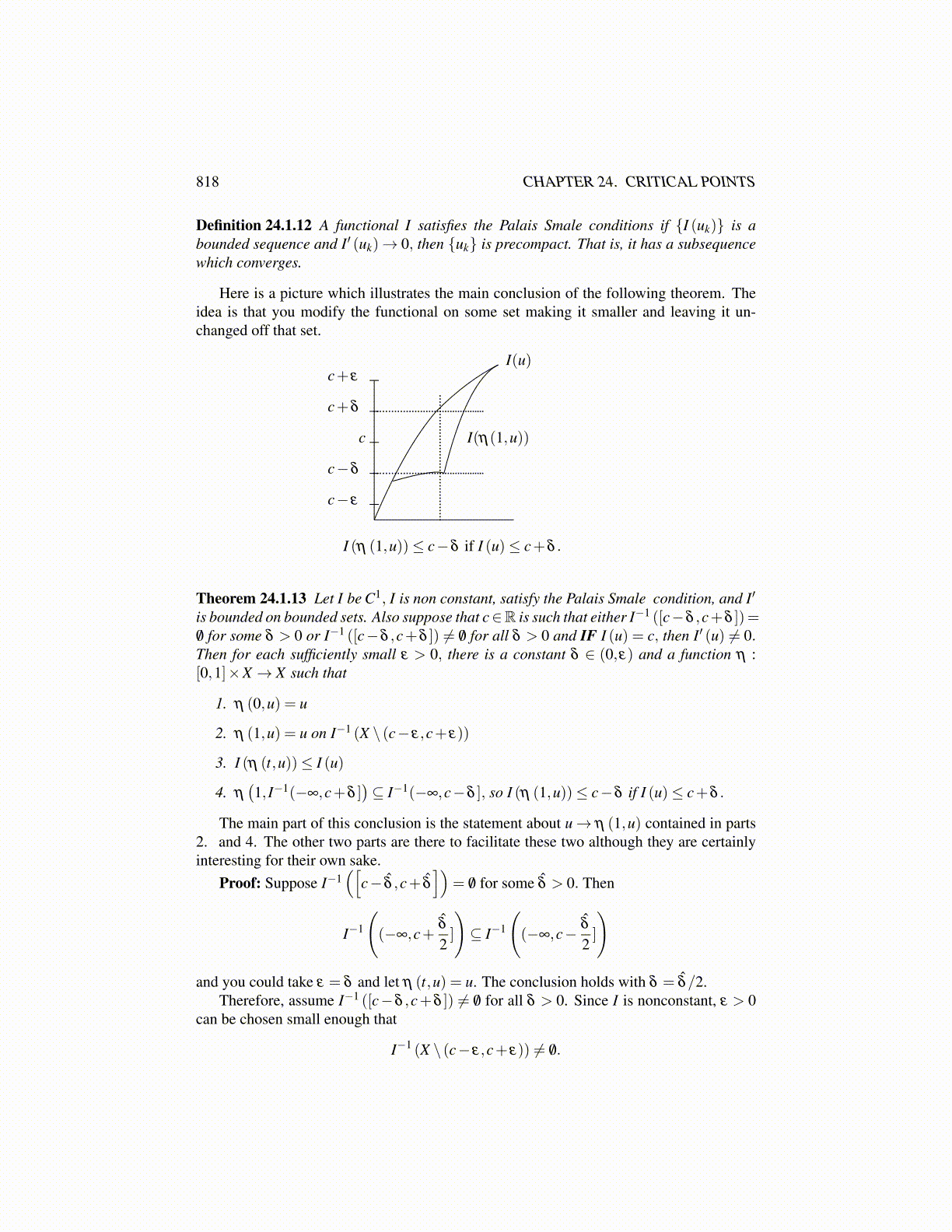
818 CHAPTER 24. CRITICAL POINTS
Definition 24.1.12 A functional I satisfies the Palais Smale conditions if {I (uk)} is abounded sequence and I′ (uk)→ 0, then {uk} is precompact. That is, it has a subsequencewhich converges.
Here is a picture which illustrates the main conclusion of the following theorem. Theidea is that you modify the functional on some set making it smaller and leaving it un-changed off that set.
c−δ
c− ε
c
c+δ
c+ ε
I(η(1,u))
I(u)
I (η (1,u))≤ c−δ if I (u)≤ c+δ .
Theorem 24.1.13 Let I be C1, I is non constant, satisfy the Palais Smale condition, and I′
is bounded on bounded sets. Also suppose that c ∈ R is such that either
I−1 ([c−δ ,c+δ ]) = /0
for some δ > 0 or I−1 ([c−δ ,c+δ ]) ̸= /0 for all δ > 0 and IF I (u) = c, then I′ (u) ̸= 0.Then for each sufficiently small ε > 0, there is a constant δ ∈ (0,ε) and a function η :[0,1]×X → X such that
1. η (0,u) = u
2. η (1,u) = u on I−1 (X \ (c− ε,c+ ε))
3. I (η (t,u))≤ I (u)
4. η(1, I−1(−∞,c+δ ]
)⊆ I−1(−∞,c−δ ], so I (η (1,u))≤ c−δ if I (u)≤ c+δ .
The main part of this conclusion is the statement about u→ η (1,u) contained in parts2. and 4. The other two parts are there to facilitate these two although they are certainlyinteresting for their own sake.
Proof: Suppose I−1([
c− δ̂ ,c+ δ̂
])= /0 for some δ̂ > 0. Then
I−1
((−∞,c+
δ̂
2]
)⊆ I−1
((−∞,c− δ̂
2]
)
and you could take ε = δ and let η (t,u) = u. The conclusion holds with δ = δ̂/2.